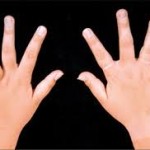 Treatment for Pauciarticular arthritis includes the use of omega-3 fatty acids that decrease the amount of medication the child needs to maintain a level of comfort. Children who go on to develop systemic symptoms are very rare and in some cases the arthritis will spontaneously resolve in several years.
Treatment for Pauciarticular arthritis includes the use of omega-3 fatty acids that decrease the amount of medication the child needs to maintain a level of comfort. Children who go on to develop systemic symptoms are very rare and in some cases the arthritis will spontaneously resolve in several years.
Polyarticular arthritis accounts for 40% of children who are diagnosed with arthritis each and every year. This condition involves at least five joints and will often affect them symmetrically. In other words, if the left hand is affected than the same joints in the right eye and will also be affected. It is more likely to affect small bones and joints in the body. If the larger joints are affected it will actually change the way in which they grow and will affect the way in which the child walks. When this happens children will develop a limp and are more at risk to developing osteoarthritis later in life because of the imbalance in their gait. (3,4)
Children with polyarticular arthritis will present in the pediatrician’s office with fever, rash and a decreased appetite. Those who are over the age of 10 may also be positive for rheumatoid factor and can suffer a more severe form of the disease.
The last form of juvenile arthritis affects the least number of children. Systemic arthritis affects more boys than girls and accounts for only 10% of those diagnosed each year. Systemic arthritis will affect joints and some organs and the children will suffer from skin rashes and inflammation of the internal organs such as the spleen and liver. Children will arrive at the pediatrician’s office complaining of complications from inflammation throughout the body and are usually between the ages of five and 10. (5)
Treatment for any of the juvenile arthritic conditions will center on decreasing pain and inflammation in order to improve the comfort level of the child, improve the growth and development of the bony structures and decrease the progression of the disease. Interestingly, treatment usually includes exercise programs that do not stress the joints and tissues but help to build muscle in order to protect the joints. These types of exercises can include swimming and stretching. The goal is to release endorphins that decrease the perception of pain.
Juvenile arthritis is actually a catch phrase for a group of three different conditions that cause inflammation, pain and redness in the joints and some organ systems of children. An accurate diagnosis is required in order to prescribe appropriate treatment protocols for the child and plan for his or her future.
References:
(1) British Medical Journal: Pauciarticular Juvenile Rheumatoid Arthritis: Clinical and immunogenetic Aspects
http://ard.bmj.com/content/38/Suppl_1/79.full.pdf
(2) Journal of Pediatrics: Joint Distribution at Presentation in Children with Pauciarticular Arthritis
http://www.ncbi.nlm.nih.gov/pubmed/10228303
(3) American Family Physicians: Diagnostic Approach to Polyarticular Joint Pain
http://www.aafp.org/afp/2003/0915/p1151.html
(4) The Merck Manual: Polyarticular Joint Pain
(5) National Institute of Arthritis and Musculoskeletal and Skin Diseases: Questions and Answers about Juvenile Arthritis
http://www.niams.nih.gov/Health_Info/Juv_Arthritis/default.asp
| Advertisement | |
 |
|

Leave a Reply